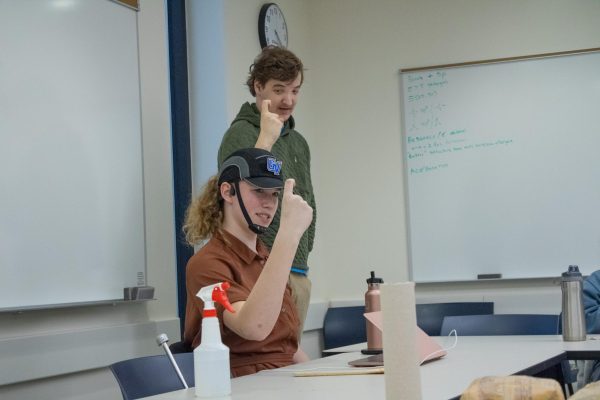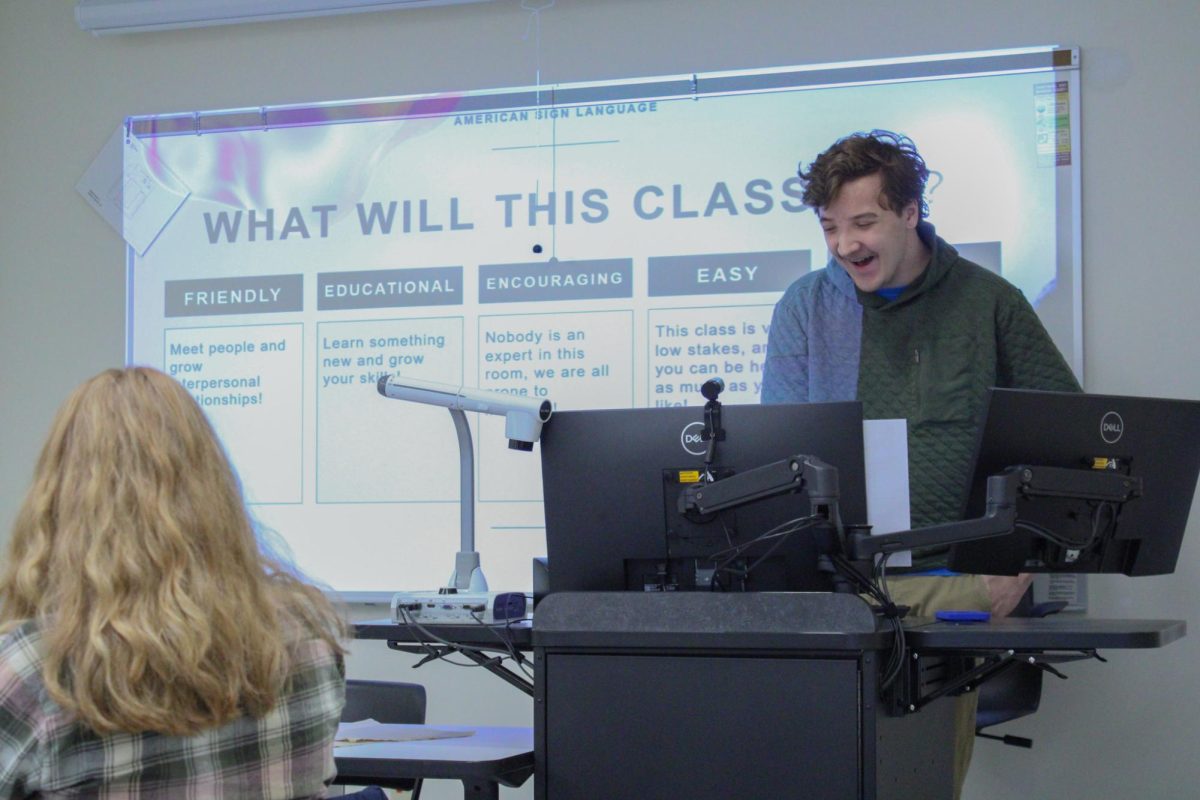To support the Deaf and hard-of-hearing community, Grand Valley State University is offering a free class dedicated to teaching American Sign Language.
The course not only instructs attendees in American Sign Language (ASL) but also integrates educational material centered on the cultural dimensions of the Deaf and hard-of-hearing community.
The class was organized by Austin Matlis, a student at GVSU who has been signing his entire life, and Mae Zurita, a Graduate Assistant in the Office of Multicultural Affairs and a frequent participant in the course. Matlis, who teaches the class, was born to two deaf parents and is a freshman studying social work, an experience which he feels has taught him useful teaching skills.
“I’ve learned how hard it is to live in a hearing and a deaf world, and using that experience, I’m here now,” Matlis said.
ASL is the natural and primary language of over 500,000 Americans. It is estimated that 6.6 million individuals in the United States over the age of 12 have severe or profound hearing loss in one or both ears.

While there are 250,000 to 375,000 signers classified as “prevocationally deaf”– individuals who lost their hearing before age 19, the overall number of signers was estimated to range from 500,000 to 642,000 individuals. In other words, there are between 250,000 and 267,000 hearing individuals who use ASL.
Varied perspectives on the definition of deafness shape how individuals are classified as deaf, hard of hearing or having hearing loss, thus affecting their inclusion in these groups. Additionally, there are many variations between linguistic capabilities in the Deaf community and many people who are not hearing impaired may decide to take up sign language. As a result, this influences how resources, support services and representation are allocated within each respective community.
The ASL community class aims to provide accessible sign language instruction for individuals who may face challenges in accessing ASL resources, particularly for students whose studies do not include sign language and thus do not have the time or funds to acquire external services.
They are working together to make sure that the class is low-pressure and its curriculum easy to engage.
“This is a come-when-you-can, learn-when-you-can class, as opposed to following a sort of linear progression,” said Briana Skerpan, a student who is only able to attend Friday sessions.
Matlis and Zurita have purposefully designed the curriculum so that anyone can join at any time without having to catch up on already covered material.

“We try to make each class its own, self-contained lesson,” Zurita said.
Matlis often begins the class with the alphabet or a word of the day. One of the previous sessions focused on inter-relational cues, such as signing about family and friends.
“We’re trying to (teach) in a way that is focused on having a lot of fun while learning about Deaf culture and Deaf issues,” said Zurita.
The class is approaching its 13th session and is advertised to continue for the next two years.
“I plan on doing it for a lot longer. I really hope you guys (the GVSU community) can learn about me, the language and the culture,” said Matlis.
The classes are held in Lake Huron Hall in Room 117, with sessions scheduled on Tuesdays at 4 p.m and Fridays at 5 p.m.











